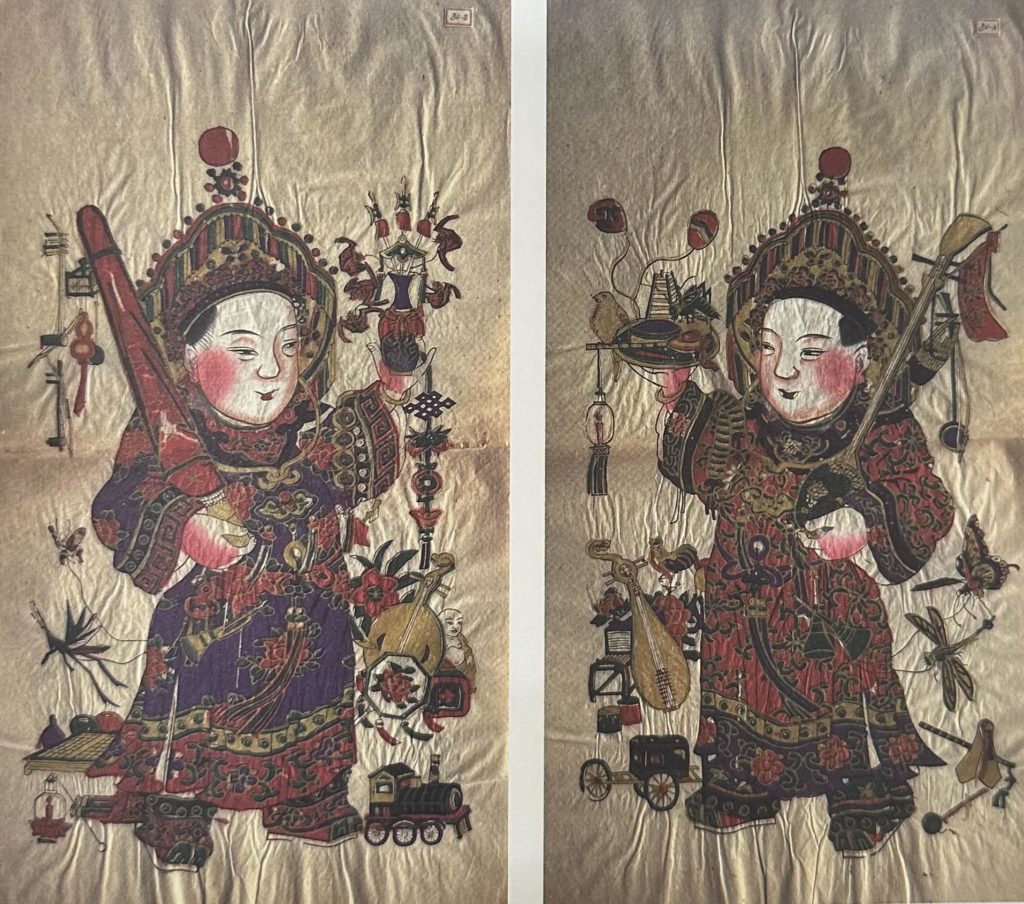The book is surely man’s greatest invention. Sometimes, though, there’s a faulty leap in logic equating the civilizational glory of printed text with the arrival of Johannes Gutenberg’s movable-type printing press circa 1440. That’s a Eurocentric and modernity-skewed way of looking at things. Over the last two millennia, it is the humble woodblock printing process which has done most of the heavy lifting. And it is very much a story centered on China, the home of paper production and printing, and history’s primary producer of books. In fact, it was only about two hundred years ago that we see texts in Chinese characters being produced with metal moveable type presses instead of woodblock printing.
Through the centuries, Chinese woodblock printers have stamped out an amazing variety and number of works, from poetry collections to the Confucian classics, guides for civil service examinees as an aid to those classics (and even mini-sized cheat books to be smuggled into exams), encyclopedias, dictionaries, song books, religious texts, divination guides, and novels. But predating and outlasting all of these was the use of block printing to produce prints for worship, either for display or ceremonial burning.

When you turn the pages of David Leffman’s beautifully produced Paper Horses: Woodblock Prints of Gods from Northern China, you are tapping into this rich legacy. You’re looking at something simple yet with profound cultural significance. It feels like reaching through time and touching history.
Although such printing goes back all the way to the Tang dynasty, the “paper horse” reproductions in this book are of prints likely dating from the early 1900s. They come from an album Leffman bought in 2020 of seventy-nine woodblock prints of Chinese deities.
As Leffman explains, the zhima (“paper horses”) were woodblock prints of folk gods which were used for home worship or burned at special ceremonies. They were mass produced, but being printed on cheap paper and made to be burned, few have survived.
Paper Horses presents the images from this album, a print on one page and commentary for it on the facing page. As well as the paper horse prints, the book features numerous nianhua (New Year pictures). “Larger and more colorful than zhima – and made to a far higher technical standard – they were prints for display in the home over the New Year festival, packed full of symbols for good fortune and prosperity. They often came in complementary pairs, one each for the left and right sides of a door.”
In “Unbounded Happiness” (below) we see such a pair of two boys surrounded by toys, the kind of decorative print used by young couples hoping to start a family. Leffman explains the symbolic meanings of the various elements in the pictures – five bats for “peace and good fortune” (left picture, top right, around the vase) and so on – and draws attention to an unusual toy: “The toy steam train on the left helps date the original design to after 1905, when China’s first commercial passenger line opened between Beijing and Wuhan.”
While many of the zhima portraits have similar images and a color palate both limited and repetitive, this does at least turn out to be an aid to comprehension; you can easily pick out the differences – a feather here, a certain animal there. The book then becomes a useful lesson in the symbolism of Chinese culture.
The explanation for a print of the White Horse Vanguard, a deity said to protect children from illness, includes the following: “The plume on the rider’s hat is a peacock feather, which were awarded to Qing-dynasty officials, supposedly as a sign of special merit – though in reality, they were handed out for just about anything.”
A small tiger under a table – a minor detail in the print of Medicine Sage Wei – is there because a tiger, “frightens off any evil, disease-carrying spirits – there’s also play on the Chinese for tiger, which sounds similar to the word for ‘protect’.” Such nuggets of information are highly transferable to other Chinese artwork, and especially temples, where the number of elements and personalities is unmanageable. Next time you’re in a temple, look for tiger statues under the altars.
The explanations for the illustrations are concise yet informative, better than what you see in museums, and written with an affectionate, humorous turn of phrase. I often found myself smiling while reading them.
I already have a solid grounding in Chinese folk religion (many years living next to active Taoist temples as well as a fair bit of reading and personal exploration), so for me the greatest pleasure in perusing Paper Horses was coming across deified figures I had been unaware of. Take, for instance, the “Supervisor of Fasting.” Depicted as a fierce warrior, he was, according to legend, a wandering monk during the fourteenth century who helped defend the famous Shaolin monastery from Red Turban rebels. He was later canonized as Jian Zhai, a guardian deity of refectories and dormitories. “His image is placed in temple kitchens to ensure that they only serve vegetarian food (on pain of a sound cudgelling).”
The author’s warm popular touch reminded me of Keith Stevens’ Chinese Gods, and I was not surprised to learn that Stevens was an inspiration for Leffman’s cultural exploration of the pantheon of Chinese gods. Leffman’s interest in woodblock prints and China, however, go back decades. He first visited the country in 1985, and since then has written extensively about it, including The Mercenary Mandarin, a wonderful biography of William Mesny, an English adventurer in late Qing-dynasty China. It was published in 2016, also by Blacksmith Books.
Paper Horses: Woodblock Prints of Gods from Northern China is highly recommended for readers with an interest in woodblock printing or traditional Chinese culture. It’s available through all the usual online bookstores, or direct from the publisher, Blacksmith Books.

